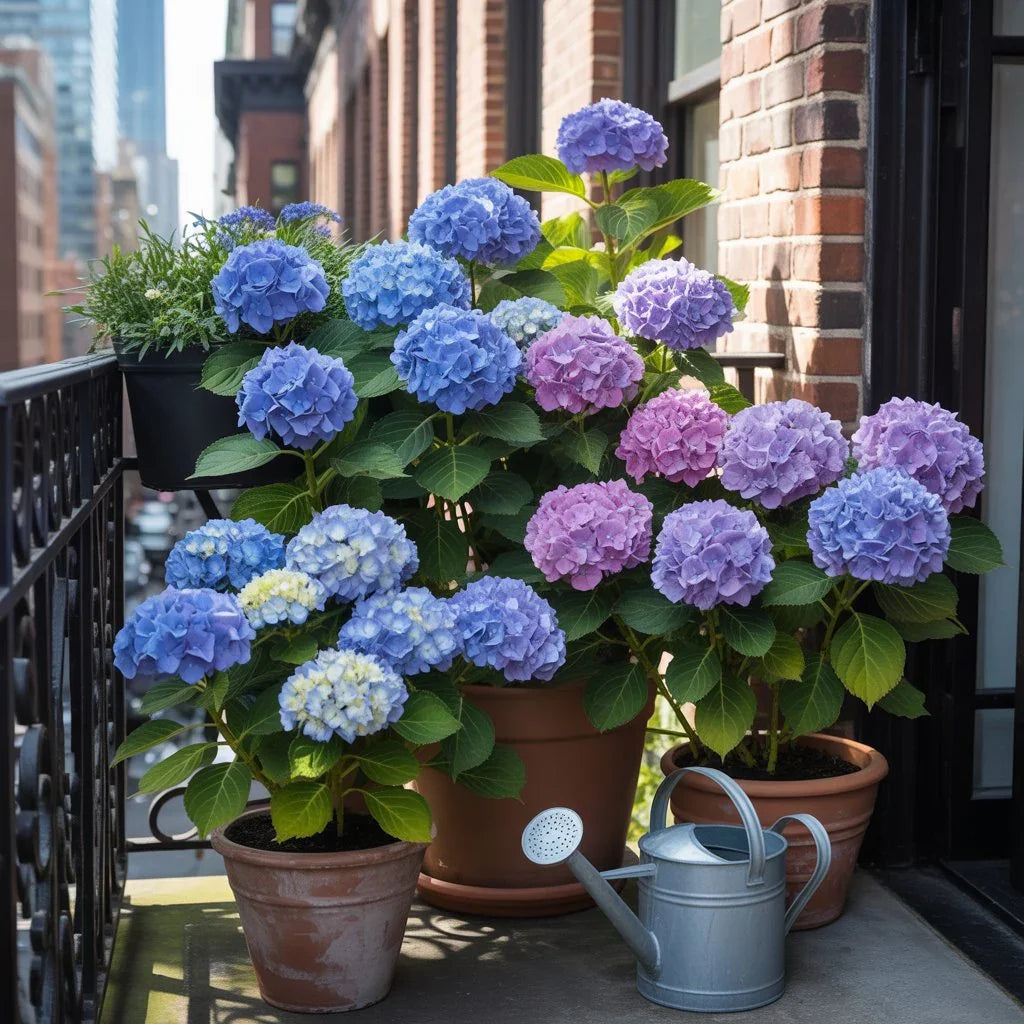
Do Hydrangeas Need Full Sunlight? A Practical Guide for City Gardeners
Share
Hydrangeas are one of the most beloved flowering shrubs in urban gardening. Their large, colorful blooms make them a showstopper on balconies, terraces, and brownstone backyards. But before you plant, the most crucial question arises: do hydrangeas need full sunlight?
The answer is not one-size-fits-all. The sunlight needs of hydrangeas depend on the variety, the local climate, and your planting conditions. This guide will break it down with clear, actionable advice so you can grow lush, vibrant hydrangeas—whether you’re gardening in the heart of Manhattan or the edge of the suburbs.
Do Hydrangeas Need Full Sunlight to Thrive?
Hydrangeas do not need full sun all day to thrive. In fact, too much sunlight can scorch their leaves and damage blooms, especially in hot, dry climates.
Most hydrangeas prefer morning sun and afternoon shade, particularly in USDA Zones 6 through 9, which include much of the Northeast and New York City.
Here’s how light affects common hydrangea types:
-
Bigleaf hydrangeas (Hydrangea macrophylla) prefer dappled light or part shade
-
Panicle hydrangeas (Hydrangea paniculata) can tolerate more sun, even full sun in cooler zones
-
Oakleaf hydrangeas (Hydrangea quercifolia) thrive in partial shade
-
Smooth hydrangeas (Hydrangea arborescens) adapt well to morning sun and filtered afternoon light
Can Hydrangeas Grow in Full Sun?
Yes, some hydrangeas can grow in full sun, but only if they receive enough water and the soil remains cool. Panicle and smooth hydrangeas are the most sun-tolerant. However, even sun-loving varieties will benefit from some relief in the hottest part of the day.
If you're planting in an exposed area or on a rooftop, choose heat-tolerant types and mulch well to retain soil moisture.
Can Hydrangeas Grow in Full Shade?
While hydrangeas are shade-tolerant, deep or full shade can reduce flowering. In low-light areas like north-facing patios or densely built courtyards, blooms may be sparse or absent.
Can I plant hydrangeas in shade? Yes—but choose wisely. Oakleaf and bigleaf hydrangeas do best with at least four hours of indirect light daily. If your space receives very little sun, consider lighter-colored blooms and fertilize properly to support healthy foliage.
Do Hydrangeas Like Sun or Shade?
Hydrangeas like both sun and shade, but in the right balance. Think of them as partial-shade plants that thrive on:
-
Early sun (before noon)
-
Afternoon protection from harsh rays
-
Consistent watering, especially during heatwaves
-
Moist, well-drained soil to prevent root stress
If you are planting in NYC, where summer sun can be intense, filtered light or partial shade is ideal. Hydrangeas in these conditions bloom longer and hold color better.
How Much Sunlight Do Hydrangeas Need?
The general rule is:
-
4 to 6 hours of sun daily for bigleaf and oakleaf hydrangeas
-
6+ hours for panicle and smooth hydrangeas if watered well
Use this guide to determine ideal placement based on your space:
-
Balcony with morning light: Perfect for bigleaf or oakleaf varieties
-
Rooftop with full sun: Use panicle hydrangeas with mulch and irrigation
-
Courtyard with dappled shade: All types will do well with proper soil care
Where to Plant Hydrangeas for Best Light Exposure
When planning where to plant hydrangeas, orientation matters. Here are optimal conditions:
-
East-facing spots provide the best light-to-shade ratio
-
South-facing gardens may require afternoon shade cloth or companion plants
-
North-facing yards are cooler and ideal for oakleaf or smooth hydrangeas
Where do you plant hydrangeas in compact spaces? Use raised beds, large containers, or corner spots that receive indirect sun. For NYC gardeners, balconies and fire escapes with partial sun exposure are prime planting zones.
How Far Apart to Plant Hydrangeas
Spacing depends on the hydrangea variety and mature size:
-
Bigleaf and oakleaf: 3 to 6 feet apart
-
Panicle and smooth: 4 to 8 feet apart
Allowing enough space ensures:
-
Proper airflow to prevent fungal issues
-
Room for symmetrical blooming
-
Easier watering and pruning access
If space is tight, compact hydrangea cultivars like ‘Little Lime’ or ‘Cityline Paris’ are excellent for pots and urban beds.
How to Water Hydrangeas in Full Sun or Partial Shade
Hydrangeas need consistent moisture, especially when exposed to more sunlight. Follow these guidelines:
-
Water deeply 2–3 times per week rather than daily surface watering
-
Use mulch to retain moisture and protect roots
-
Check soil before watering—if it’s dry two inches down, it’s time
-
Avoid wetting leaves, especially in humid climates, to prevent mildew
In NYC’s summer heat, container hydrangeas may need daily watering. Garden beds in partial shade may only need watering every other day.
Final Thoughts: Hydrangeas Thrive in Balance
Hydrangeas flourish in balance—not extremes. Understanding how much sun they need and where to plant them ensures you enjoy full, vibrant blooms without stress. Whether you're working with a backyard, a Brooklyn balcony, or a shaded garden bed, your hydrangeas will thrive with thoughtful placement and care.
Discover the perfect hydrangeas for your Manhattan apartment balcony or backyard. Shop our curated collection and bring elegance home.
